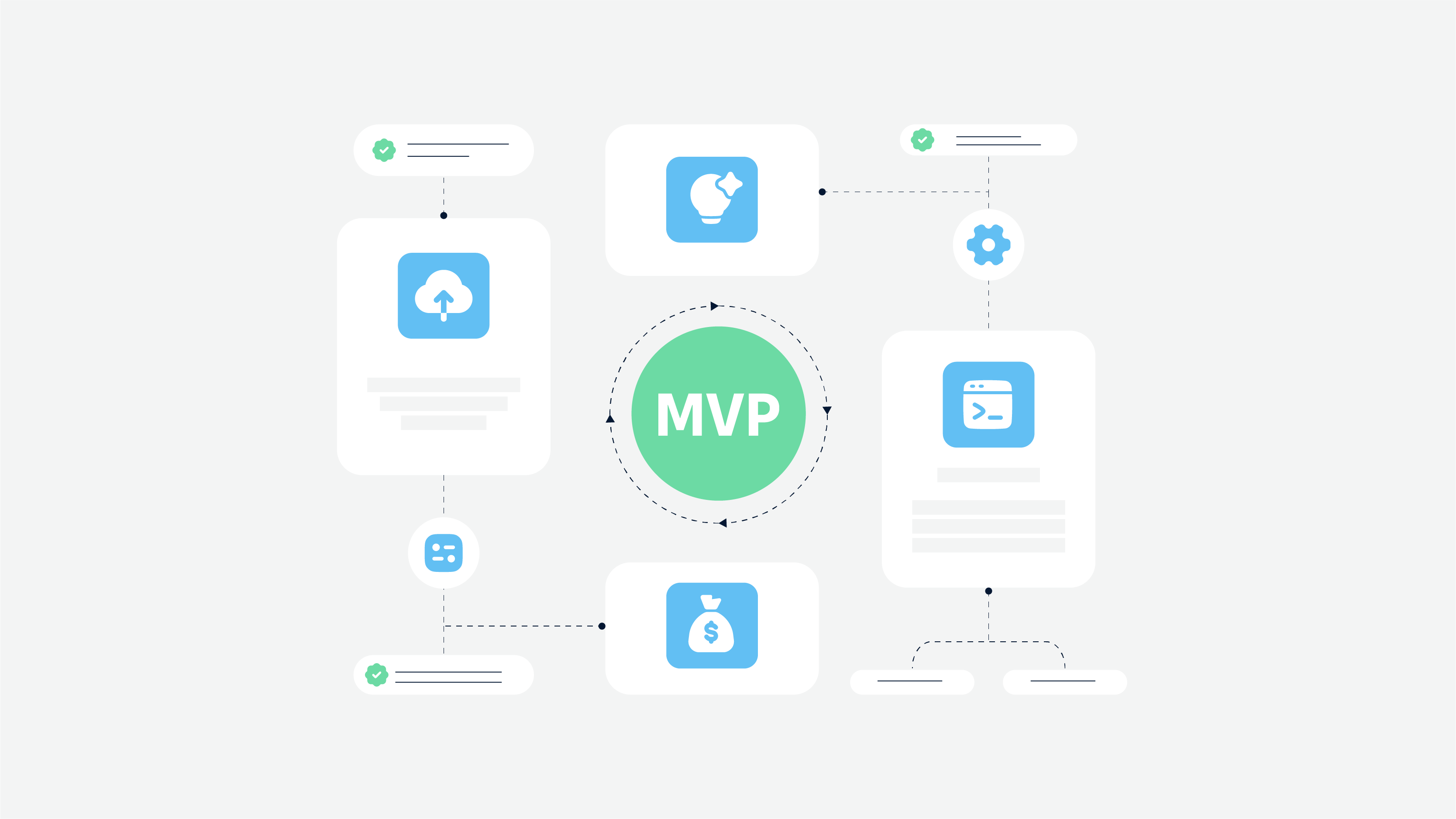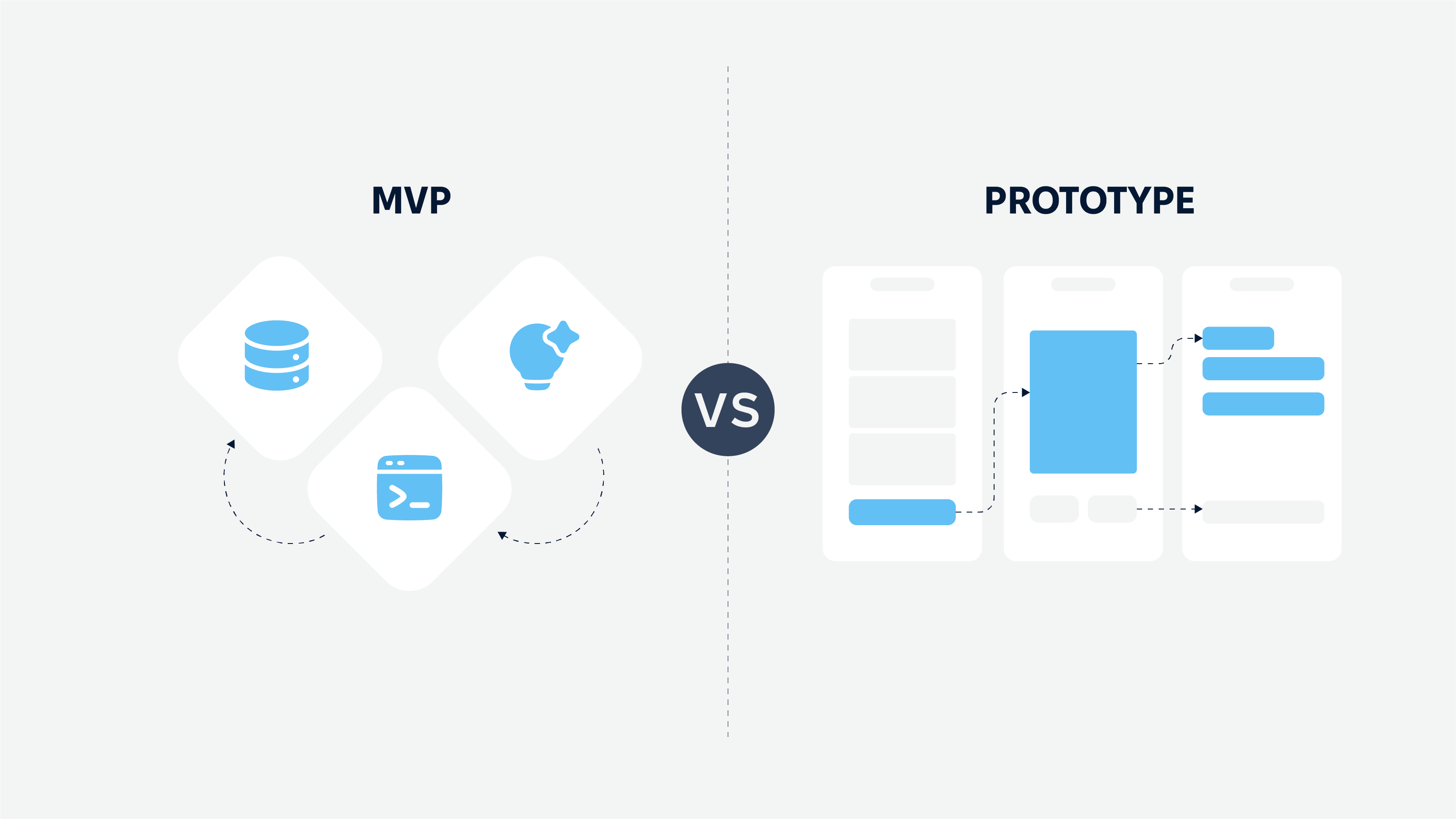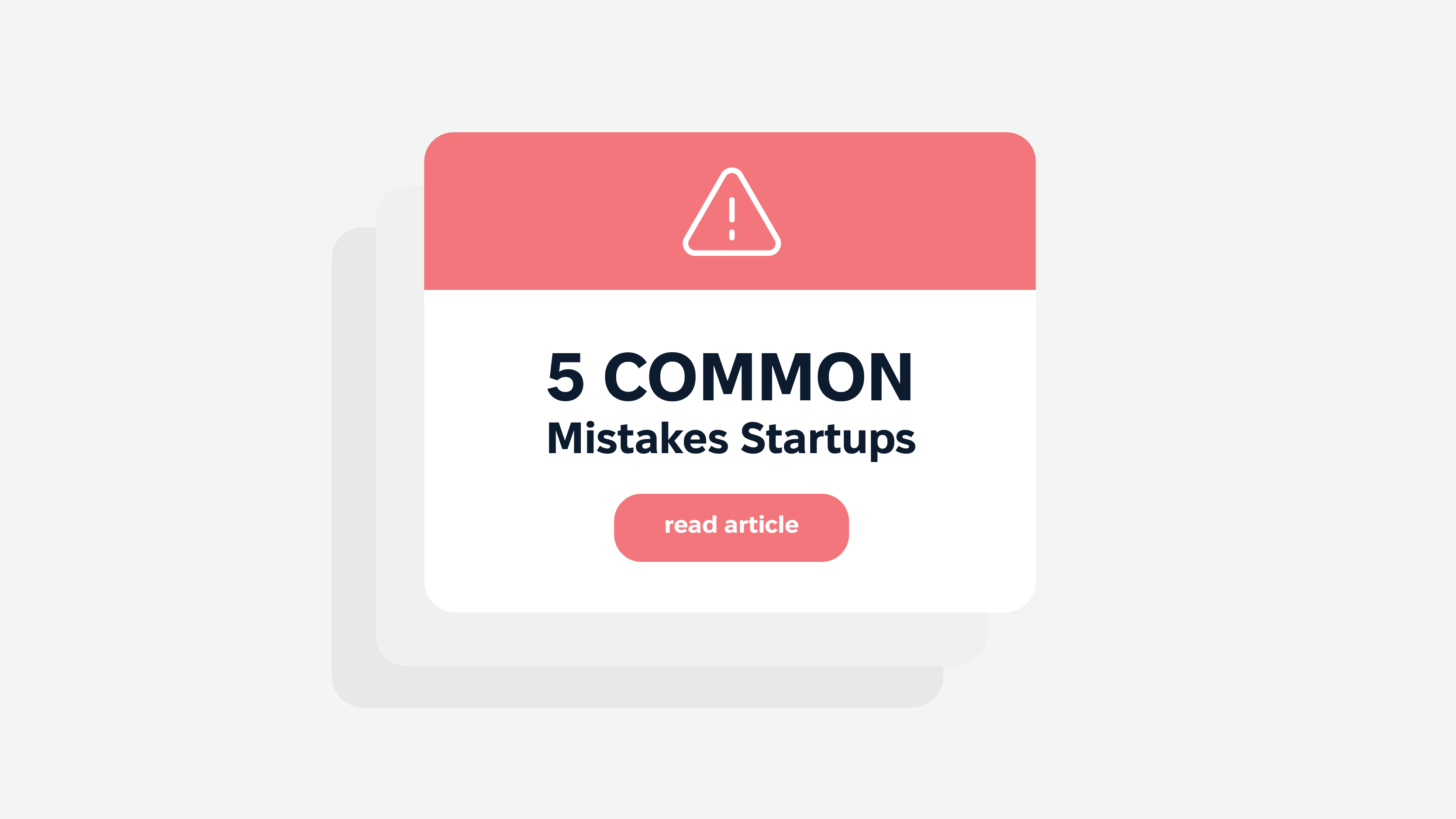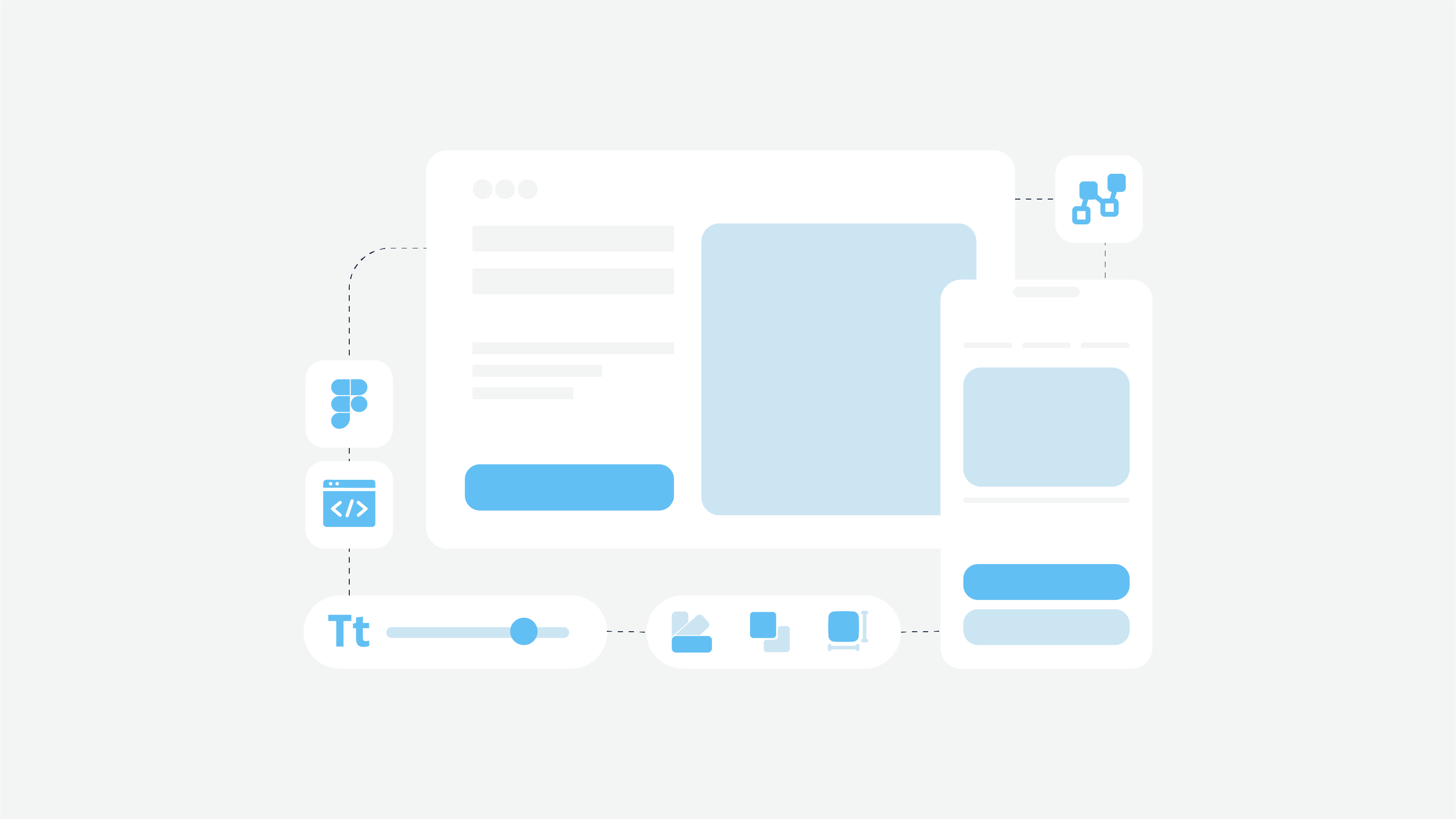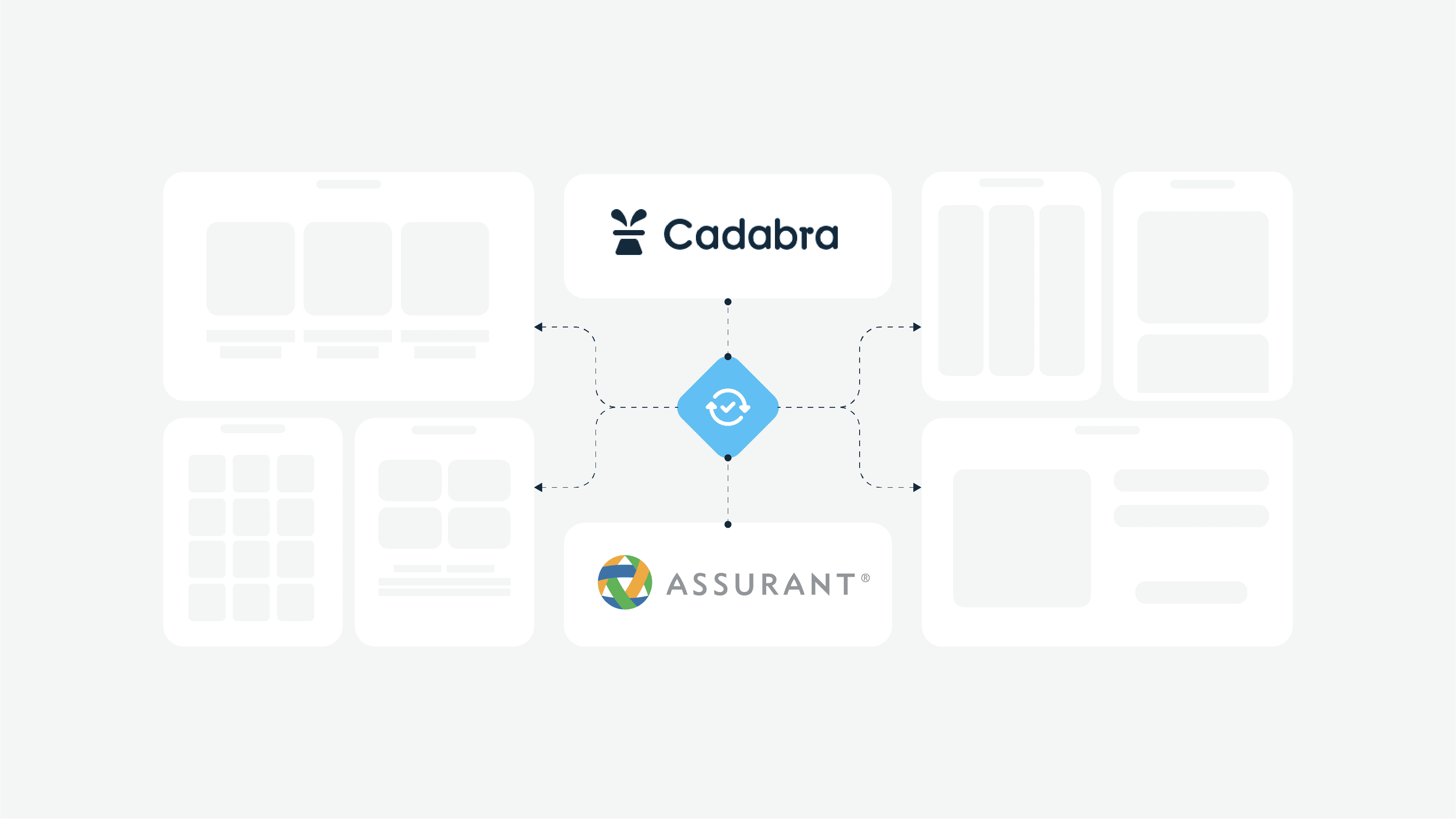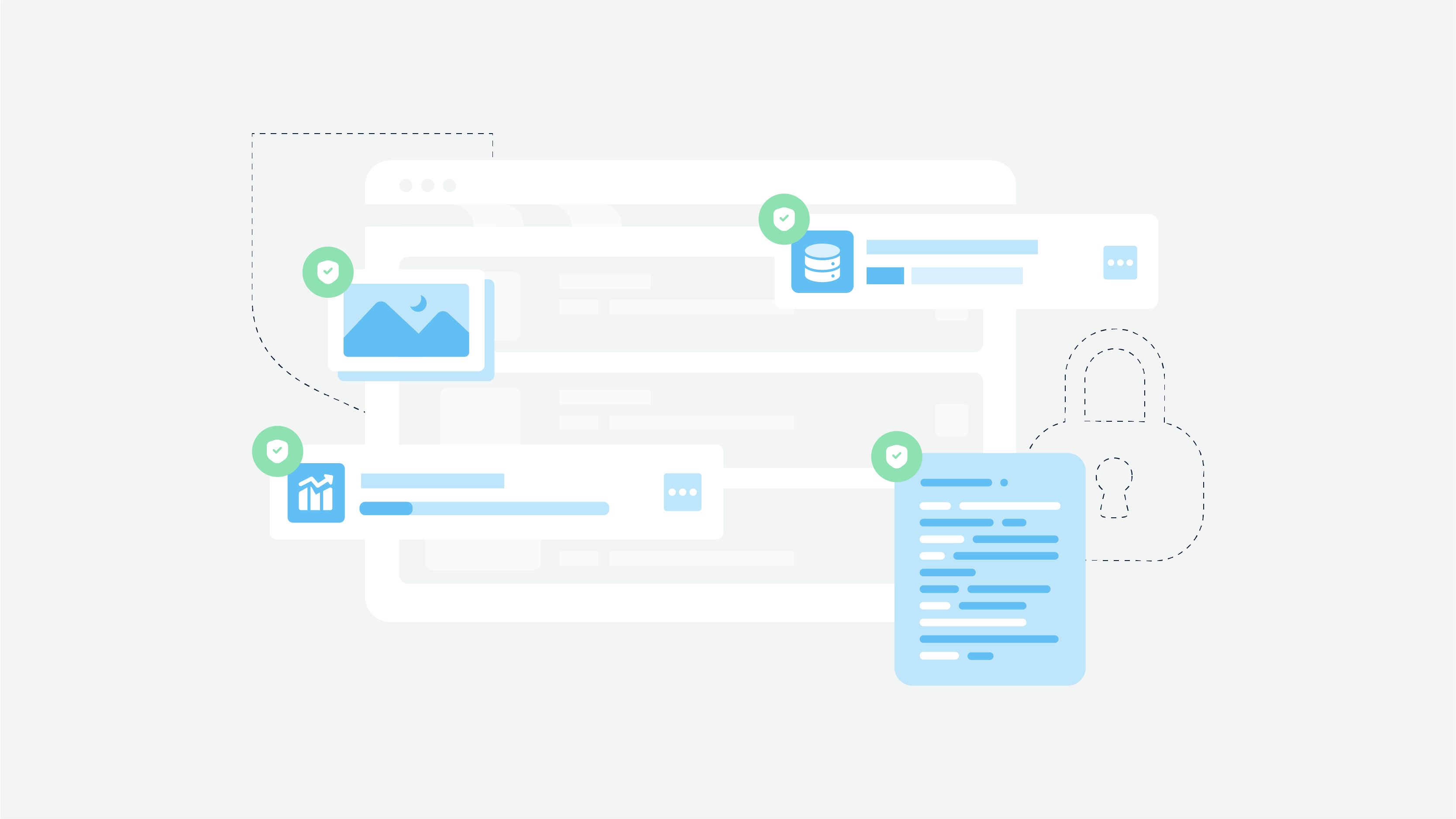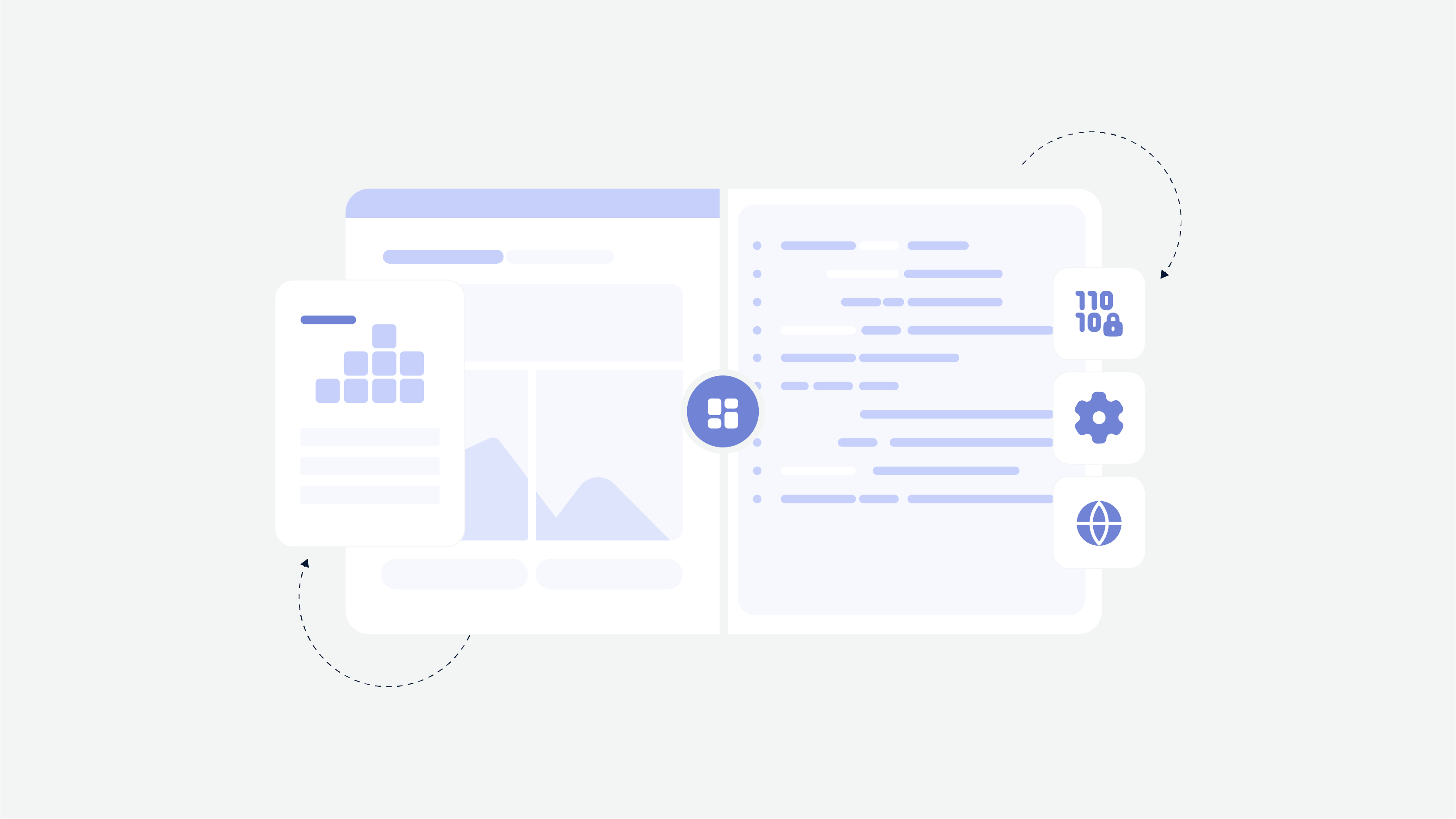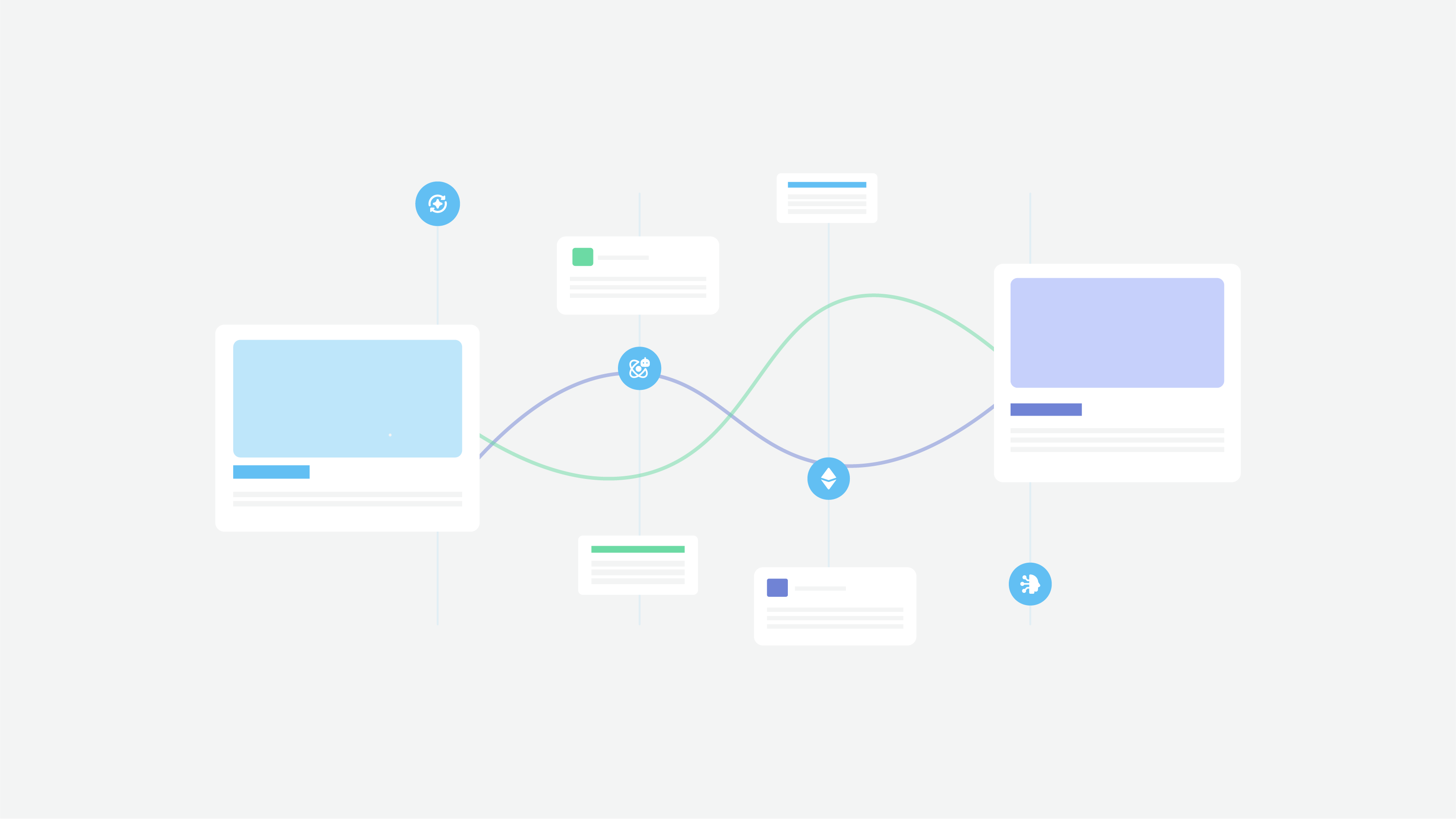How Much Does It Cost to Build an MVP That’s HIPAA-Compliant?
Thinking about building an MVP? Selecting the right development partner can significantly influence the cost, timeline, and overall success of your MVP. You might be wondering how much it costs to build an MVP, as the cost usually falls between $10,000 and $150,000 or more. This depends on factors like project size, technology stack, and team location. In this article, we’ll dive into the specifics, helping you understand and budget for your MVP effectively.
Key Takeaways
Planning an MVP budget is crucial for project success as it ensures resource allocation aligns with business objectives and minimizes financial risks.
MVP development costs can range from $10,000 to $150,000, influenced by factors such as project complexity, team location, and technology stack.
Optimizing MVP development costs involves prioritizing core features, leveraging open-source tools, and considering outsourcing to reduce labor expenses.
Understanding market demand is essential in validating an idea before significant investment, as it helps ensure there is a need for the product in the market, thereby reducing the risk of failure.
Why Planning Your MVP Budget Is Crucial
Planning your MVP budget is more than just crunching numbers; it’s about laying a solid foundation for your project’s success. A well-defined budget ensures smooth execution and avoids financial pitfalls. Without it, there’s a significant risk of running out of funds, leading to project failure. Careful planning helps minimize time and resource wastage on projects that are unlikely to succeed.
Understanding MVP costs helps set achievable goals and avoid overspending. Aligning your budget with business objectives ensures that resources are allocated effectively, prioritizing features that meet both user needs and business goals. This strategic approach optimizes your budget use and enhances the chances of your MVP resonating with your target audience. A well-executed MVP can also serve as a foundational step for future growth and long-term success.
The right development team is crucial for timely project completion and budget management. By investing time in planning, you set the stage for a smoother in-house development process and a more impactful project manager product launch. Development teams play a vital role in this development effort’s success, especially when supported by an in-house development team.
Understanding the Cost to Build an MVP
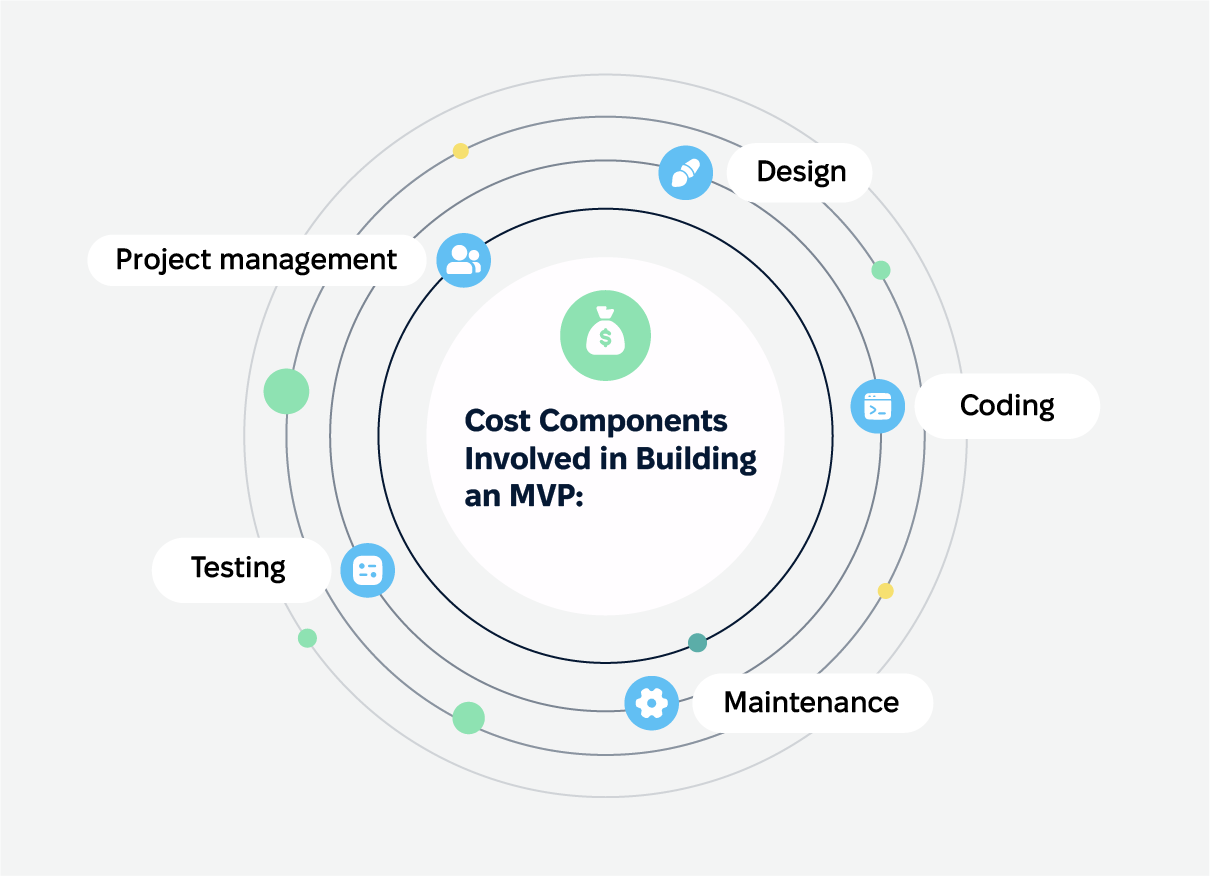
The cost to build an MVP can vary significantly depending on multiple factors, but understanding the general MVP cost breakdown can help you plan better. On average, developing a simple MVP typically ranges from $10,000 to $50,000. However, the cost can escalate based on the scope of work, technology stack, and the team required, usually falling between $15,000 to $150,000 or more.
The MVP app development cost varies significantly based on factors like project scope, technology stack, and team composition.
Several critical components contribute to the overall costs vary based on the overall cost, including design, coding, project management, testing, and maintenance. The geographical location of your software development team and contractual obligations can also influence costs.
Accurate estimates require thorough discussions of project requirements and scope with experts. The following sections will detail pre-development, development, and post-development costs for a complete cost breakdown.
Importance of Knowing Costs for Startups
Knowing the costs of MVP development is crucial for startups as it allows them to plan their budget effectively, make informed decisions about resource allocation, and prioritize features and functionality. Understanding the costs also helps startups to avoid financial risks and negotiate with investors or partners. By knowing the costs, startups can create a realistic budget and allocate resources efficiently, which is essential for the success of their MVP project.
Pre-Development Costs
Pre-development costs are the initial expenses before actual development begins, including market research, validation cost range, prototyping, and design. Market research and validation typically range from $1,000 to $10,000 to ensure a viable market for your minimum viable product cost. Understanding market demand is crucial in this phase as it helps validate the core concept and ensures there is a need for the product, reducing the risk of failure. Prototyping and wireframing, which structure the application and depict the project flow, generally cost between $500 to $5,000 and take about 1-2 weeks, contributing to the initial MVP development budget.
Wireframing and design are crucial elements of the MVP development process. The product design cost range usually falls between $1,000 and $15,000 and can significantly impact the MVP’s success. The design phase, involving UI/UX design, user research, detailed wireframing, and custom illustrations, typically lasts between 2 to 4 weeks. These preliminary costs, including the wireframing cost range, are essential as they lay the groundwork for the entire development process.
In summary, the pre-development phase involves critical steps that contribute to the overall MVP budget. Investing in thorough market research, validation, and thoughtful design ensures your MVP is well-structured and primed for success.
Development Phase Costs
The development phase incurs the bulk of MVP costs. Back-end development focuses on server-side logic, database management, and user authentication. Frontend development emphasizes user interfaces and interactions, typically using technologies like React.js, Angular.js, and Vue.js in an MVP development project. Additionally, the design and technology stack for mobile apps can significantly influence the cost of MVP development.
Testing and quality assurance are additional critical cost components, including planning, execution, bug fixing, and ensuring cross-platform compatibility. Vendors might charge extra for quality assurance and accessibility services. Integration with external services may also incur usage fees, licensing costs, and customization expenses. It is essential to ensure that the MVP functions seamlessly across various platforms, including mobile devices like iOS and Android.
The complexity of the MVP project, including handling business logic and data requirements, can significantly affect both the timeline and costs. Selecting an appropriate technology stack, including low-code/no-code solutions, can help reduce development costs and effort. A well-managed development phase is crucial for effective and budget-friendly MVP construction.
Post-Development Expenses
Post-development expenses are incurred after the MVP is launched, including marketing, user acquisition, and maintenance costs. The average monthly budget for marketing an MVP is typically no less than $5,000. Initial marketing and user acquisition costs generally range from $2,000 to $20,000.
Maintenance and support costs range from $500 to $5,000, with about 20% of the overall app development costs typically spent on maintenance annually. Additional expenses might arise from incorporating user feedback and making enhancements to the MVP, which can influence the web application’s cost range. Third-party integrations, such as APIs and payment gateways, can also enhance the functionality and capabilities of the MVP, making it more attractive to users and scalable in the long term.
These post-launch activities are essential to ensure the MVP remains relevant and continues to meet user needs.
Factors Influencing MVP Development Costs
Several factors influence the overall cost of MVP development. These include project scope, team location, technology stack, and product complexity. A clear and detailed product vision helps in aligning goals and avoiding resource wastage.
Choosing appropriate programming languages as part of the technology stack is crucial, considering factors like scalability, maintenance simplicity, and cost implications. Failing to conduct thorough market research can result in building an MVP that doesn’t address real user needs and minimal viable product market demands, leading to low adoption rates. Understanding these factors and planning accordingly can help optimize costs and ensure a more successful product launch.
Project Complexity
The complexity of your MVP project significantly impacts the development cost. A simple MVP can be developed in about 2 to 4 months, while a more complex MVP might take 6 to 12 months. The more complex the application, the higher the overall MVP app development costs, which can exceed $100,000 and take over a year, affecting the MVP development cost.
The number of features you plan to include in your MVP also affects the budget. Listing and categorizing required features before budgeting can help manage costs effectively. Secure funding is a critical step for managing the budget effectively and making startups more attractive to investors. Changes in project requirements typically increase development time and resources, further impacting the budget.
Careful planning and prioritizing must have features, with careful consideration, to keep the development process streamlined and cost-effective.
Geographical Location of Development Team
The geographical location of your development team significantly influences MVP development costs and MVP development price. Labor rates, skill levels, and economic conditions vary by region. For instance, North American developers typically charge around $80–$150 per hour, whereas rates in India range from $20 to $100 per hour.
Utilizing teams in Eastern Europe or Asia can result in significant cost savings while maintaining quality. Additionally, choosing to outsource MVP development can be a cost-effective solution for startups. It is crucial to select a reliable development agency with expertise, market understanding, and effective communication methods. Understanding these regional cost variations helps you make informed decisions and optimize your MVP budget effectively.
Technology Stack and Platform Choice
The choice of technology stack and development platform plays a crucial role in determining MVP development costs. Selecting a stack that allows for multiple platforms and cross-platform development can reduce overall costs and speed up delivery. The decision between developing a native application versus a cross-platform one influences both cost and timeline. Additionally, the design and technology stack for mobile app development can significantly influence the cost and timeline of MVP development, especially when considering compatibility across platforms and the potential use of cross-platform frameworks.
Important factors to consider when selecting a technology stack include scalability, flexibility, simplicity of maintenance, and alignment with project needs. For building a web-based MVP, the MEAN stack (MongoDB, Express, Angular, Node) is often recommended.
Informed technology choices can significantly impact the cost and success of your MVP.
Strategies to Optimize MVP Development Costs
Optimizing MVP development costs involves strategic planning and smart decision-making. Overloading an MVP with unnecessary features can complicate development, increase costs, and delay the launch. Using low-code or no-code development platforms can simplify the development process and reduce costs.
Integrating third-party services can enhance functionality and user experience, but it also comes with potential costs, such as licensing fees and customization challenges. Poor project management can lead to delays and budget overruns, negatively impacting the launch timeline. Leveraging open-source tools can save on licensing fees and overall development costs. Implementing these strategies helps optimize your MVP budget and ensures a more efficient development process.
Prioritize Core Features
Prioritizing core features and basic features effectively manages the development budget. The number of planned features heavily impacts both the budget and timeline. Adding advanced features, such as AI functionalities, can significantly increase the time and budget needed.
Focusing on critical features leads to a more manageable budget and minimizes unnecessary development. Prioritizing essential features reduces scope, leading to fewer development hours and lower costs. This approach ensures the minimum viable products remain focused on delivering its core value proposition.
Leverage Open-Source Tools
Utilizing open-source tools provides a cost-effective alternative to proprietary software solutions. Open-source frameworks save considerable amounts on development costs by avoiding licensing fees. These tools also enhance flexibility and allow for community support.
Using open-source tools eliminates licensing fees, dramatically lowering overall project expenses. Leveraging these tools makes the development process more efficient and cost-effective, optimizing your MVP budget.
Consider Offshore Development
Outsourcing MVP development can significantly reduce initial costs, providing access to experienced professionals at lower labor costs compared to local markets. Offshore development offers skilled developers at lower hourly rates.
Outsourcing allows greater flexibility in scaling the development process based on project needs, optimizing the budget. This approach helps manage costs effectively while ensuring high-quality outsourced development.
Building an MVP on a Budget
Building an MVP on a budget requires careful planning, prioritization, and optimization of resources. Startups can reduce costs by prioritizing essential features, using open-source technology, hiring a development team, and using agile development methodologies. Outsourcing development can also help reduce costs. By following these strategies, startups can build a successful MVP without breaking the bank.
Tips for Reducing MVP Development Costs
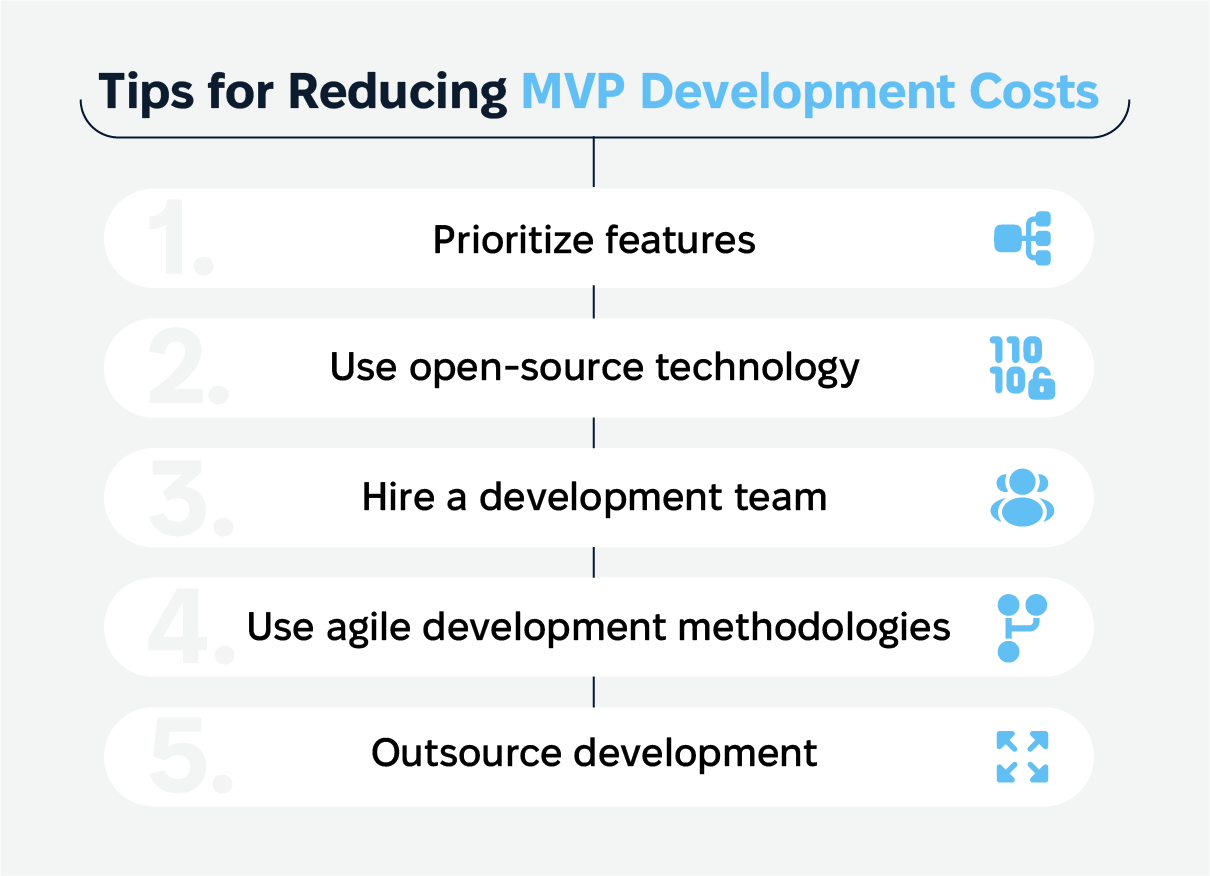
Prioritize features: Prioritize essential features and functionality to reduce development costs.
Use open-source technology: Using open-source technology can reduce costs and improve efficiency.
Hire a development team: Hiring a development team can help reduce costs in the long run.
Use agile development methodologies: Agile development methodologies can help reduce costs and improve efficiency.
Outsource development: Outsourcing development can help reduce costs and improve efficiency.
Choosing the Right Development Team
Choosing the right MVP development team is crucial for successful MVP execution. Consider factors such as experience, portfolio, client reviews, and pricing. Expertise and cost-effectiveness are essential for staying within budget and meeting objectives.
Hiring an inexperienced team can lead to miscommunication and misalignment with business objectives. Flexible engagement models, such as hiring developers or time and material arrangements, can enhance cost-effectiveness.
Carefully selecting the right team composition ensures efficient execution and effective budget management to save money.
Freelancers vs. In-House Teams
Deciding between freelancers and in-house teams involves weighing the pros and cons. In-house resources are the costliest, estimated at $25,000 per month, while hiring freelancers averages around $13,000. Freelancers offer lower costs and flexible hiring options, whereas in-house teams provide better control and adaptability to changes.
Freelance developers may present challenges in managing team dynamics and have fewer obligations towards the project. Platforms like Upwork, Freelancer, and Fiverr can help you find freelance developers for your MVP. Understanding these differences helps you make an informed decision that aligns with your budget and project needs.
Benefits of Outsourcing Development
Outsourcing development offers several benefits that can significantly reduce costs. Agencies typically provide experienced developers, designers, and project managers, lowering overall expenses. Additionally, outsourcing saves on overhead expenses like salaries, infrastructure setup, and employee benefits.
Specialized development agencies bring valuable expertise and resources, enhancing product quality. This approach allows efficient scaling of the development process based on project needs, ensuring cost-effective and high-quality MVP development.
Common Pitfalls in MVP Development
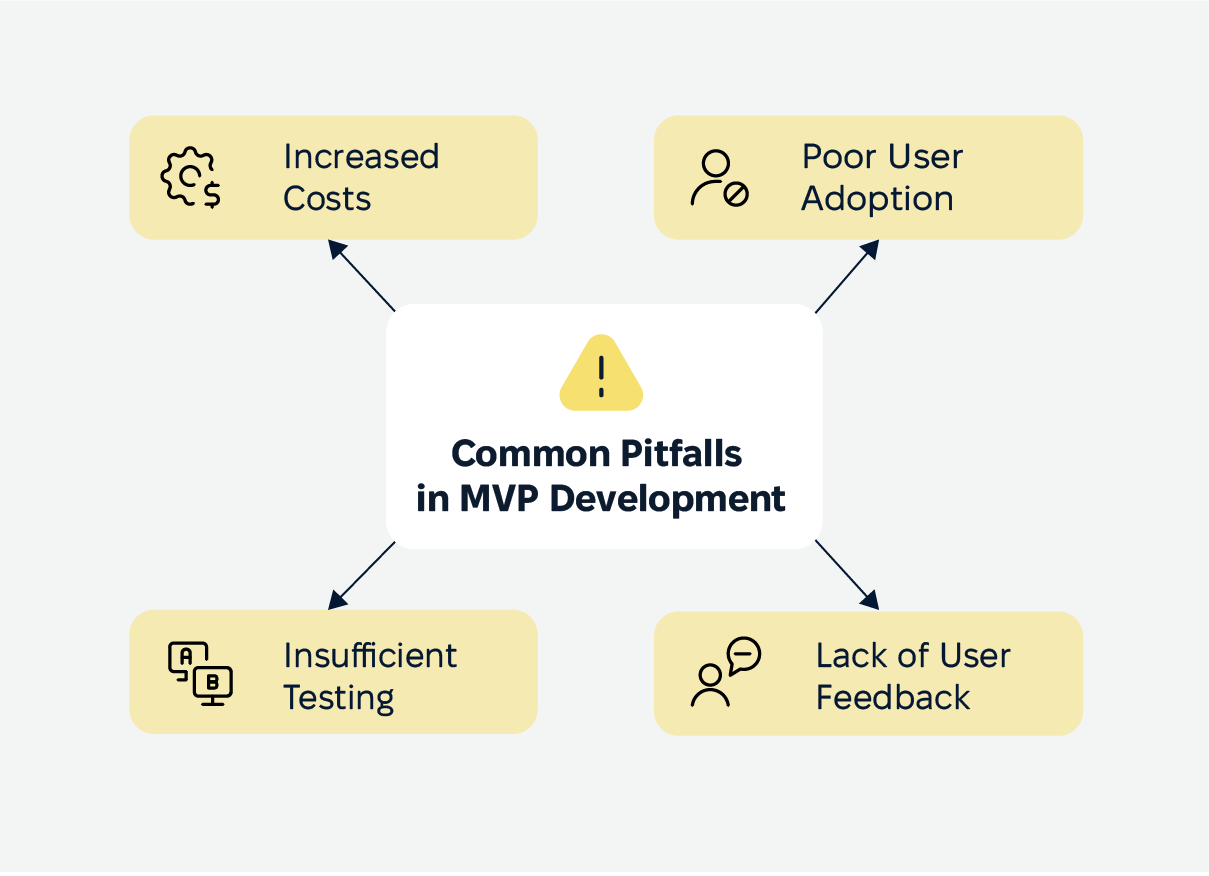
Navigating the MVP development process is fraught with potential pitfalls that can derail the project and inflate costs. Neglecting user interface design can lead to high churn rates, as user expectations may cause users to abandon a confusing or frustrating product. Rushing to launch without adequate quality assurance can result in a poor initial user experience, damaging the product’s reputation.
Failing to incorporate customer feedback during development can lead to creating a product that doesn’t solve real problems. Mismanagement of stakeholder expectations can result in project derailment due to conflicting priorities and unrealistic demands. Collaborating with external experts can help mitigate risks associated with new product launches. Avoiding these common mistakes is crucial for a successful MVP.
Post-Development Costs
Post-development costs include costs associated with maintaining and updating the MVP, such as server and infrastructure costs, marketing and promotion costs, and ongoing maintenance and updates. These costs can add up quickly and should be factored into the overall budget.
Maintenance and Updates
Maintenance and updates are essential for the success of an MVP. Ongoing maintenance and updates can help ensure that the MVP remains relevant and competitive in the market. The cost of maintenance and updates can vary depending on the complexity of the MVP and the frequency of updates. Startups should factor these costs into their overall budget and plan for ongoing maintenance and updates to ensure the long-term success of their MVP.
Real-World Examples of MVP Costs
Looking at real-world examples can provide valuable insights into the costs involved in MVP development. Companies like Amazon, Instagram, and Dropbox started as successful MVPs and have since shaped their respective markets. For instance, the Vyrb app secured $1 million in funding while achieving over 50,000 downloads. Similarly, JobGet received $52 million in funding after app improvements and boasts over 2 million downloads.
These examples illustrate the potential for success with a well-planned MVP. Dropbox, for example, achieved 70,000 signups from a minimal investment strategy that included creating a master software and a promotional video. Such success stories highlight the importance of strategic planning and execution in MVP development.
Twitter's MVP
Developing an MVP similar to Twitter can be a costly endeavor. Building a copycat of Twitter’s MVP can incur costs starting from $250,000. The estimated cost to create an MVP like Twitter is over $50,000, reflecting the complexity and features required for such a platform.
The development process for Twitter’s MVP can take anywhere from 3 to 6 months. This timeframe and cost reflect the significant investment required to build a robust and scalable social media platform. Understanding these costs can help in planning and budgeting for similar MVP projects.
Instagram's MVP
Instagram’s MVP provides another insightful example. The initial concept of Instagram combined check-ins, gaming, and photo sharing. The original Instagram app was developed in just 2 months, showcasing the efficiency and focus on core features.
Building such an app today would require a thorough understanding of the market and user needs. The success of Instagram’s MVP demonstrates the importance of a clear vision and targeted feature set in achieving rapid development and user adoption.
Summary
In summary, understanding and planning for MVP development costs is crucial for the successful launch and sustainability of your product. From pre-development through post-development, each phase involves specific expenses that need careful consideration. Factors such as project complexity, geographical location of the development team, and technology stack choices significantly influence the overall budget.
By prioritizing core features, leveraging open-source tools, and considering offshore development, you can optimize your MVP development costs. Choosing the right development team and avoiding common pitfalls further enhance the chances of a successful MVP launch. Real-world examples like Twitter and Instagram illustrate the potential for success with strategic planning and execution. As you embark on your MVP journey, these insights and strategies will equip you to make informed decisions and achieve your business goals.
Ready to Build Your MVP?
Are you prepared to bring your MVP vision to life? Partner with us for expert guidance and efficient execution. Our experienced development team is here to help you navigate the entire development process, optimize costs, and ensure your MVP meets your business goals.
Contact us today to get started on your journey to a successful product launch!
Frequently Asked Questions
What is the average cost to build an MVP in 2025?
The average cost to build a minimum viable product (MVP) in 2025 typically ranges from $10,000 to $50,000, but it can exceed $150,000 based on specific project requirements. It’s essential to consider factors such as the technology stack and team expertise when budgeting for your MVP.
How long does it take to develop a typical MVP?
Developing a typical MVP usually takes 2 to 4 months for simple projects, while more complex MVPs can require 6 to 12 months. Therefore, your timeline will depend on the project’s complexity and objectives.
What are the main factors influencing MVP development costs?
The main factors influencing MVP development costs are project complexity, the geographical location of the development team, the technology stack used, and the number of features included. It’s essential to consider these aspects to accurately estimate your budget and timeline.
How can I optimize my MVP development costs?
To optimize your MVP development costs, prioritize core features, utilize open-source tools, and explore offshore development options. These strategies can significantly reduce expenses while maintaining quality.
What are some common pitfalls to avoid in MVP development?
To ensure successful MVP development, avoid neglecting user experience design, rushing the launch without proper quality assurance, overlooking customer feedback, and mismanaging stakeholder expectations. Prioritizing these aspects will lead to a more effective and user-friendly product.

